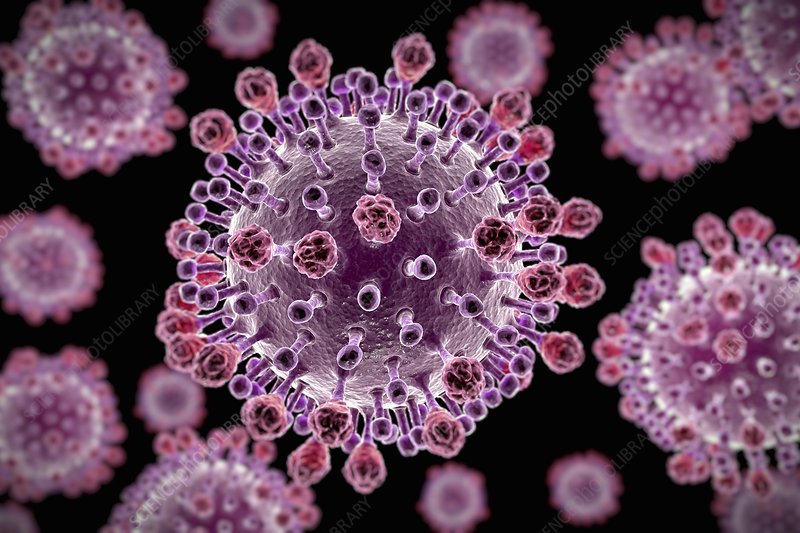
Swine Flu
Similar to humans, pigs are susceptible to colds and flu, especially in the Autumn and Winter seasons; however, they can contract these illnesses at other times of the year as well. In pigs, this condition is referred to as Swine Influenza (swine flu), characterised as a respiratory disease caused by type A influenza virus. Swine Influenza regularly sparks outbreaks in pig populations. While swine flu viruses typically do not infect humans, rare cases of human infections have been reported. In pig herds, these viruses can lead to significant illness, although fatalities are infrequent.
The virus circulates among pigs throughout the year, with a tendency to peak during late Autumn and Winter months, mirroring the seasonal patterns observed in human flu and colds.
Similar to influenza viruses in humans and other animals, swine flu viruses undergo frequent changes. Pigs have the susceptibility to be infected by avian flu and human flu viruses. When flu viruses from diverse species infect pigs, mutations can occur, giving rise to new viruses that are a combination of swine, human, and/or avian flu viruses. This continual evolution has led to the emergence of various variations of swine flu viruses over the years. As a result, there are three primary influenza A virus subtypes that have been identified in pigs: H1N1, H1N2, and H3N2.
The primary mode of transmission for swine flu viruses among pigs is believed to be close contact, and there is a potential for transmission through contaminated objects moving between infected and uninfected pigs. Swine herds, even those that have been vaccinated against swine flu, may experience sporadic disease, with some showing only mild or no symptoms of infection.
Symptoms
Clinical manifestations of swine flu in pigs may encompass symptoms such as fever, depression, coughing (barking), discharge from the nose or eyes, sneezing, breathing difficulties, eye redness or inflammation, and a decrease in appetite. It is noteworthy that certain pigs infected may not display any signs of illness.
Is Swine Flu common
Before 1985, Swine Flu had not clinically appeared in pigs in the UK. However, subsequent investigations revealed the presence of a specific strain, H3N2, derived from humans, in the pig population since 1968. This strain was first associated with clinical disease in pigs in 1986, a year after cases of Swine Flu caused by a pig-specific H1N1 strain emerged. Later, in 1991/2, a new strain emerged, a mutation of the H1N1 pig strain and an avian influenza strain, designated H1 A/SW/195852/92. This strain, combined with PRRS (Blue Ear) infection, proved particularly severe. Throughout the 1990s, additional strains such as H1N2 and H3N1 were detected in pigs.
At present, the disease is widespread throughout the UK, manifesting as sporadic cases in individual herds, occasionally across regions, and persistently affecting certain farms for several months. Reports from APHA covering the winter period of 2015/6 indicate common disease outbreaks, primarily attributed to either the human pandemic strain A H1N1 09v or H1N2. Similar to human influenza, its prevalence peaks during winter conditions when virus survival rates are high, although cases can occur at any time of the year. A significant incidence of the pandemic strain in humans heightens the risk of widespread infection among pigs.
Treatment
Treatment for influenza in pigs is limited due to its viral nature, and unless there is a secondary infection, treatment is generally unnecessary. Typically, pigs will recover within a week. However, supportive therapy using aspirin administered via the water system or paracetamol in feed may aid in accelerating individual pig recovery. (As stated from NADIS) However in all cases do seek advice from your vets.
Nevertheless, Swine Flu, particularly in grower pigs, can make them vulnerable to other diseases, notably Actinobacillus pleuropneumoniae. Many outbreaks of the latter have been linked to preceding unrecognised Swine Flu outbreaks. In such instances, prompt treatment with appropriate antibiotics is crucial to mitigate potentially catastrophic losses associated with this disease.
During uncomplicated Swine Flu outbreaks, growth may be slowed, and affected pigs may not be suitable for slaughter while they are ill. It is important to avoid overcrowding during outbreaks, and slaughter weights may be reduced after the disease has subsided.
Worth Noting: For over two decades, Swine Flu has posed a significant concern to pig keepers in the UK, with varying strains causing a range from mild to severe, including loss of appetite and respiratory issues. The emergence of the more recent human pandemic strain has heightened concerns among pig keepers due to its potential as a reverse zoonosis. This strain not only presents a direct threat as a primary source of disease but also raises alarms regarding its ability to intermingle with existing flu strains in pigs. Such interactions could potentially give rise to even more potent strains, posing risks to both pig and human populations alike.

Attention to high standards of biosecurity, isolation of incoming stock away from your main area of your holding/Farm have parts to play in the prevention of many diseases. Not allowing to share same air space and no nose-to-nose contact. Biosecurity signs obtainable HERE from AHDB

The Oxford Sandy and Black Pig Group is UK’s only pig breed that is a registered charity in England & Wales (1190469) and Scotland (SCO52662). We are creating a better future for our breed the bloodlines and it breeding potential together with our Independent Pork Producers, Breeders and Oxford Sandy and Black Keepers. Please click the donate button so we may continue to look after our breed and our supporters
Follow us on Facebook and see how we support, help and inspire individuals about our rare breed